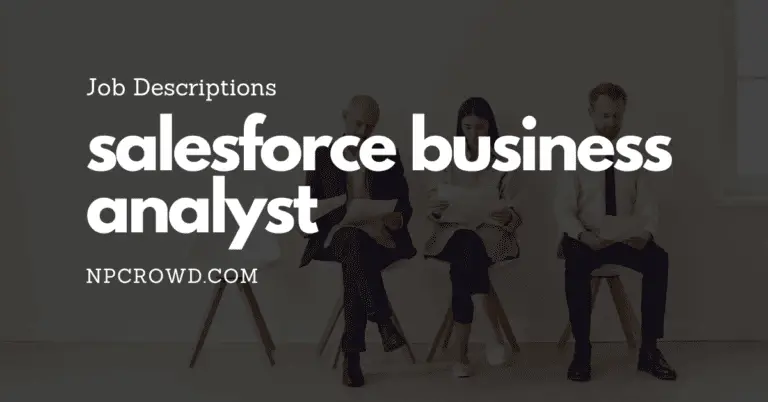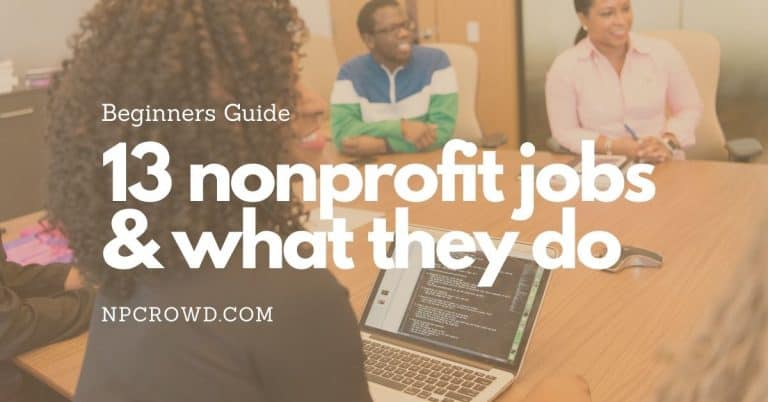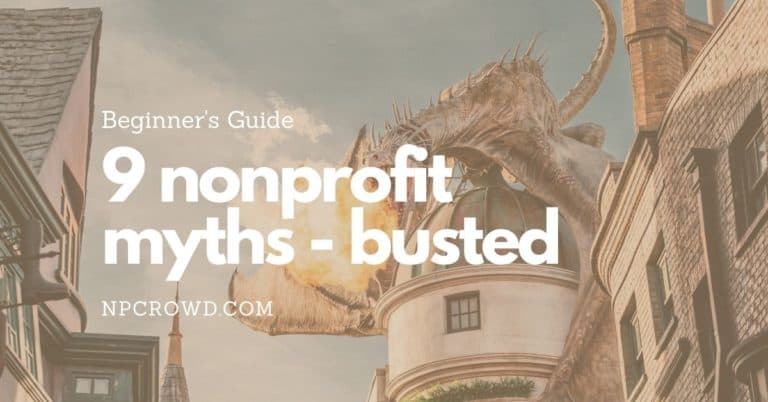Understanding the Benefits of PEO for Nonprofits
Disclaimer: This post may contain affiliate links. These links, if used and purchases made, we may earn a small commission. These affiliate programs do not impact the recommendations we make or the resources we refer you to. Our focus is on providing you the best resources for your nonprofit journey.
Nonprofits face unique challenges when it comes to providing employee benefits. However, with a Professional Employer Organization (PEO), nonprofits can access competitive benefits plans and administrative support to stay focused on their mission. In this article, we will explore the benefits of using a PEO for nonprofits and provide key takeaways to consider.Key Takeaways
- PEOs provide access to comprehensive HR services and affordable benefits plans for nonprofits.
- Using a PEO can lead to cost savings and reduced administrative burden for nonprofits.
- PEOs help nonprofits improve compliance with employment laws and regulations.
- When choosing a PEO, nonprofits should assess their needs, research options, and consider pricing and contract terms.
- Implementing a PEO requires preparation, effective communication with employees, and monitoring of the PEO’s performance.
What is a PEO?

How does a PEO work?
A professional employer organization (PEO) works by entering into a co-employment relationship with the businesses they serve. This means that the PEO becomes the employer of record for tax and compliance purposes, while the business retains control over its day-to-day operations and decision-making. The PEO handles HR tasks, such as payroll, benefits, and workers’ compensation, allowing the business to focus on its core activities. By partnering with a PEO, nonprofits can access a wide range of HR services and resources that they may not be able to afford on their own. It’s like having an HR department without the overhead costs.
Why should nonprofits consider using a PEO?
Nonprofits, like any other organization, can greatly benefit from partnering with a Professional Employer Organization (PEO). By outsourcing certain HR functions to a PEO, nonprofits can free up valuable time and resources that can be redirected towards their mission and programs. A PEO can handle administrative tasks such as payroll processing, benefits administration, and compliance with employment laws, allowing nonprofit leaders to focus on strategic initiatives and the overall growth of the organization.
One important benefit of using a PEO is the access to comprehensive HR services. Nonprofits often have limited HR staff and expertise, making it challenging to effectively manage all aspects of human resources. A PEO can provide expertise in areas such as employee benefits, employee relations, and HR compliance, ensuring that nonprofits are able to attract and retain top talent while staying compliant with regulations.
In addition, partnering with a PEO can result in cost savings for nonprofits. PEOs have the ability to negotiate better rates for employee benefits due to their collective buying power. This means that nonprofits can offer competitive benefits to their employees without incurring the high costs associated with managing benefits independently. The cost savings can be significant, allowing nonprofits to allocate more resources towards their core programs and initiatives.
Furthermore, using a PEO can help reduce the administrative burden on nonprofits. Nonprofit leaders often find themselves overwhelmed with paperwork, compliance requirements, and other administrative tasks. By outsourcing these tasks to a PEO, nonprofits can streamline their operations and focus on their mission. The PEO takes care of tasks such as payroll processing, tax filings, and employee onboarding, allowing nonprofit leaders to spend more time on strategic decision-making and program development.
Lastly, partnering with a PEO can improve compliance for nonprofits. Employment laws and regulations can be complex and constantly changing. Nonprofits need to ensure that they are in compliance with these laws to avoid legal issues and penalties. A PEO has expertise in HR compliance and can help nonprofits navigate the ever-changing landscape of employment laws. They can provide guidance on issues such as employee classification, wage and hour regulations, and workplace safety, ensuring that nonprofits are operating within the legal framework.
In summary, nonprofits should consider using a PEO to benefit from comprehensive HR services, cost savings, reduced administrative burden, and improved compliance. By partnering with a PEO, nonprofits can focus on their mission and programs while leaving the HR functions in the hands of experts.
Benefits of using a PEO for nonprofits

Access to comprehensive HR services
One of the key benefits of using a PEO for nonprofits is gaining access to comprehensive HR services. A PEO, or Professional Employer Organization, offers a wide range of HR solutions to help nonprofits effectively manage their workforce. These services can include payroll processing, benefits administration, risk management and compliance, and more. By partnering with a PEO, nonprofits can tap into the expertise and resources of the organization to streamline their HR processes and ensure compliance with employment laws and regulations.
In addition to the core HR services, some PEOs also provide specialized services tailored to the needs of nonprofits. For example, they may offer state-specific HR systems with on-demand consulting services and recruitment outsourcing to help nonprofits find and hire top talent. This comprehensive approach to HR support can be invaluable for nonprofits that want to focus on their mission while leaving the HR responsibilities to the experts.
Cost savings
One of the key benefits of using a PEO for nonprofits is the potential for cost savings. As a small nonprofit, you may not have the same buying power as larger corporations when it comes to negotiating rates with insurance providers. However, by partnering with a PEO, you can take advantage of economies of scale that can lead to better benefits plans at lower costs.
Additionally, using a PEO can save your nonprofit time and resources. PEOs handle administrative tasks such as payroll functions and compliance issues, allowing your team to refocus their energy and time on business growth and development. This can be especially valuable for nonprofits with limited staff and resources.
In summary, partnering with a PEO can provide your nonprofit with cost savings and alleviate the burden of administrative tasks, allowing you to focus on your mission and strategic activities.
Reduced administrative burden
By partnering with a PEO, nonprofits can experience substantial administrative relief and valuable resources. PEOs alleviate the burden of administrative tasks, allowing nonprofit teams to refocus their energy and time on business growth and development. This means that the time and resources that would otherwise be spent dealing with payroll functions and compliance issues can be redirected to more strategic activities.
In addition to reducing administrative burden, PEOs also offer other benefits for nonprofits. These include:
- Time savings: By having the PEO handle most of the general HR tasks, nonprofits can focus on other core business operations.
- Cost savings: PEOs have greater buying power, which allows them to offer more affordable workers’ compensation and health insurance options compared to what is available to small businesses.
- Peace of mind: Nonprofit owners can feel at ease knowing they have support throughout the employment life cycle.
- Better benefit offerings: Nonprofits can access Fortune 500-level benefits and professional administrative services.
- Improved tracking and administrative functions: PEOs conduct in-depth HR assessments to minimize risk and maximize growth opportunities.
- Business growth: Nonprofits can benefit from the expertise and resources provided by PEOs, leading to overall business growth and success.
Partnering with a PEO not only reduces administrative burden but also provides nonprofits with the necessary support and resources to thrive in their mission.
Improved compliance
Compliance is a critical aspect for nonprofits, and partnering with a PEO can help ensure that your organization stays on top of the ever-changing regulations and requirements. With the expertise and knowledge of compliance issues provided by a PEO, you can navigate through the complex landscape of employment laws with confidence. By staying compliant, you can avoid costly penalties and legal issues that could negatively impact your nonprofit’s mission and reputation.
Implementing a PEO also means having access to compliance tools and resources that can streamline and automate compliance processes. These tools can help you stay up to date with country-specific payroll and labor laws, reducing the risk of non-compliance. Additionally, a PEO like Papaya Global conducts compliance checks to ensure that all requirements are strictly followed, giving you peace of mind.
In summary, partnering with a PEO for improved compliance can provide your nonprofit with the expertise, resources, and peace of mind needed to navigate the complex landscape of employment laws and regulations.
Choosing the right PEO for your nonprofit

Assessing your nonprofit’s needs
To ensure you make the best choice when selecting a PEO for your nonprofit, it’s important to start by identifying your organization’s needs. Ask yourself questions like:
- Are there specific HR tasks we want to outsource?
- Are we interested in improving benefits packages to attract and retain talent?
- Do we need general HR support, or are we seeking more specific expertise in compliance or risk management?
By outlining your needs, you can better match the right PEO to your business. Remember that not all PEO services are the same, so it’s important to find one that offers the services you require. Once you have identified your needs, you can then shop around for PEOs that suit your requirements. Additionally, consider the following questions when evaluating each company:
- Is it a member of NAPEO?
- Is it IRS certified?
- Are its financial statements independently audited by a CPA?
- Have its practices been independently accredited by ESAC?
By considering these factors, you can narrow down your options and make an informed decision.
Researching PEO options
When researching PEO options, it’s important to assess your nonprofit’s specific needs and compare the pricing, features, and contracts of different PEOs. Take the time to review the technology and user experience of potential PEOs, and consider whether they specialize in your industry. Additionally, it’s a good idea to check their accreditations and discuss any additional costs with their sales representatives. By doing thorough research, you can ensure that you choose a PEO that aligns with your nonprofit’s goals and requirements.
Evaluating PEO services and features
When evaluating PEO services and features, it’s important to consider the specific services being offered and whether they align with the needs of your nonprofit. Take the time to assess whether all of the features provided are necessary for your business, as you don’t want to pay for services that you won’t use. Additionally, look for a PEO that offers transparent pricing, so you know exactly what you’re paying for. Third-party reviews can also be helpful in evaluating the quality of a PEO’s services. Check sites like G2, Capterra, and the Better Business Bureau for feedback from real users. Remember, finding the right PEO for your nonprofit requires careful consideration and research.
Considering pricing and contract terms
When choosing a PEO for your nonprofit, it’s important to carefully consider the pricing and contract terms. Pricing can vary depending on the services you need and the size of your organization. Some PEOs offer a bundled pricing model, while others offer an a la carte option. It’s important to evaluate your nonprofit’s specific needs and budget to determine which pricing structure is the best fit. Additionally, it’s crucial to review the contract terms thoroughly. Look out for terms related to contract termination, renewal processes, responsibilities and duties of each party, and dispute resolution. If you have any questions or uncertainties, don’t hesitate to ask for clarification or seek legal advice before signing the agreement.
Implementing a PEO for your nonprofit

Preparing for the transition
Transitioning your HR processes to a PEO is a big undertaking, but it can ultimately simplify your HR responsibilities. The average PEO transition takes roughly four weeks, starting at the beginning of a payroll cycle, but it could take anywhere from three to six weeks. During this implementation period, the PEO will work closely with your team to ensure that all of the proper paperwork is complete and successfully transitioned.
Here are some actions you can take to ensure a smooth transition:
- Assess your current HR processes and identify areas that can be improved or streamlined.
- Communicate with your employees about the upcoming transition and address any concerns or questions they may have.
- Provide training and onboarding for your employees to familiarize them with the new PEO systems and processes.
- Monitor and evaluate the performance of the PEO throughout the transition period to ensure that it meets your expectations and needs.
Remember, the goal of this transition is to simplify your HR responsibilities and improve efficiency. By taking the time to prepare and communicate effectively, you can set your nonprofit up for success with a PEO.
Communicating with employees
Effective communication with employees is crucial when implementing a PEO for your nonprofit. It’s important to keep your employees informed and engaged throughout the transition process. Here are some tips to help you effectively communicate with your employees:
- Provide clear and timely information about the PEO and how it will impact their roles and responsibilities.
- Address any concerns or questions they may have and be transparent about any changes that will occur.
- Offer training and support to help employees navigate the new system and understand the benefits they will receive.
- Encourage open and ongoing communication, allowing employees to provide feedback and share their thoughts and concerns.
Remember, effective communication is key to a successful transition and ensuring that your employees feel supported and valued.
Training and onboarding
Training and onboarding are crucial steps in ensuring the success of new hires. A strong onboarding experience is the key to making a positive first impression with new employees. It sets the tone for their entire tenure at the organization and helps them feel welcomed and supported.
One effective way to improve the onboarding process is to digitize the paperwork. By using software, new hires can easily complete necessary forms and set up their payroll information. This not only saves time but also reduces the chances of errors.
Another important aspect of onboarding is providing training. PEOs often offer employee training and development courses on various topics, such as communication, leadership, and workplace technology. This access to training materials can help employees enhance their skills and grow professionally.
To create a welcoming environment, it’s essential to communicate with new hires and address any questions or concerns they may have. Regular check-ins and open lines of communication can make the onboarding process smoother and more enjoyable for everyone involved.
Remember, a well-executed onboarding process can lead to higher employee satisfaction, increased productivity, and better retention rates.
Monitoring and evaluating the PEO’s performance
Once you have implemented a PEO for your nonprofit, it is important to regularly monitor and evaluate its performance to ensure that it is meeting your organization’s needs. Here are some key steps to effectively monitor and evaluate the PEO’s performance:
-
Set clear performance goals: Define specific performance goals that align with your nonprofit’s objectives and communicate them to the PEO. This will help both parties understand what is expected and work towards achieving those goals.
-
Regularly review reports and metrics: Request regular reports from the PEO that provide insights into key metrics such as employee satisfaction, turnover rates, and compliance. Analyzing these reports will give you a better understanding of how the PEO is performing and identify areas for improvement.
-
Seek feedback from employees: Engage with your employees to gather their feedback on the PEO’s services. Conduct surveys or hold meetings to understand their experiences and any concerns they may have. This feedback can provide valuable insights into the PEO’s performance from the perspective of those directly affected.
-
Conduct periodic evaluations: Schedule periodic evaluations with the PEO to discuss their performance and address any issues or concerns. This will allow you to have open and transparent communication and ensure that both parties are working towards continuous improvement.
By regularly monitoring and evaluating the PEO’s performance, you can ensure that it is effectively supporting your nonprofit’s HR needs and making a positive impact on your organization’s overall performance.
Frequently Asked Questions
What is a PEO?
A PEO, or Professional Employer Organization, is a company that provides comprehensive HR services, including benefits, payroll, and HR administration, to other businesses.
How does a PEO work?
When a business partners with a PEO, the PEO becomes the employer of record for the business’s employees. This means that the PEO takes care of payroll, benefits administration, and other HR tasks, while the business retains control over day-to-day operations and management.
Why should nonprofits consider using a PEO?
Nonprofits can benefit from using a PEO because it provides access to affordable benefits plans and comprehensive HR services. This allows nonprofits to focus on their mission while leaving the administrative tasks to the PEO.
What are the benefits of using a PEO for nonprofits?
Some benefits of using a PEO for nonprofits include access to comprehensive HR services, cost savings, reduced administrative burden, and improved compliance with employment laws and regulations.
How can nonprofits choose the right PEO?
To choose the right PEO, nonprofits should assess their needs, research PEO options, evaluate PEO services and features, and consider pricing and contract terms.
What is the process of implementing a PEO for a nonprofit?
Implementing a PEO for a nonprofit involves preparing for the transition, communicating with employees, training and onboarding, and monitoring and evaluating the PEO’s performance.







